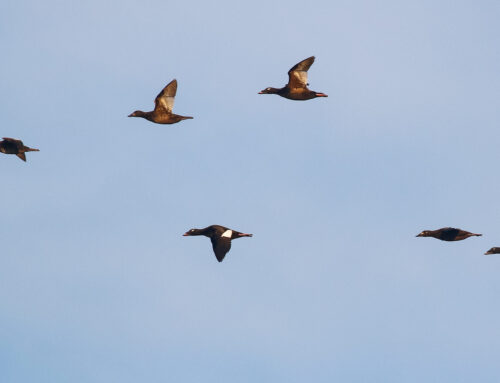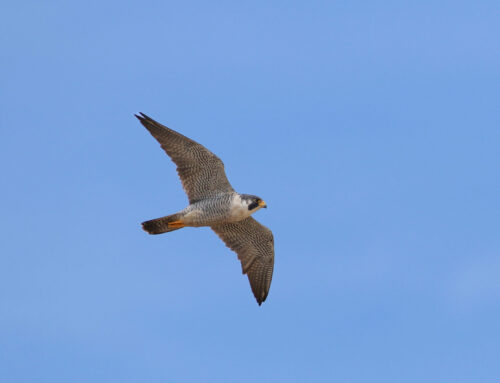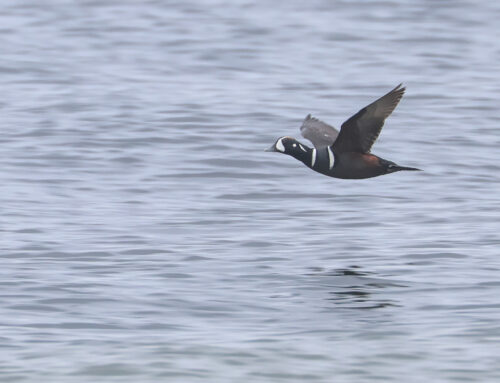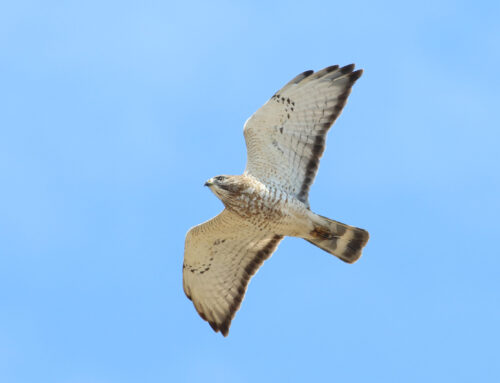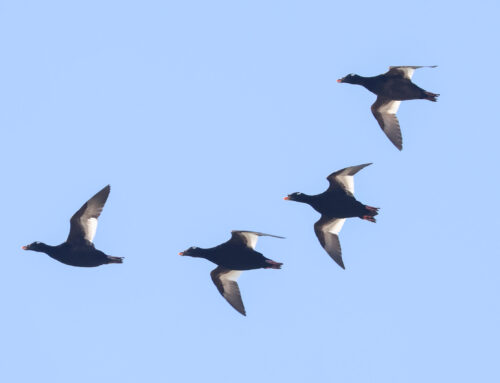Happy migration, folks! Now you may be wondering, “What’s with the title of this blog, ‘Beautiful Noise?'” Isn’t this supposed to be about waterbirds and waterbird migration? Isn’t what I do, counting birds, all visual? Well, not exactly.
Migration and bird ID is much more than just what an observer can pick up visually. I have to say that to really understand migration, you also have to hear and listen to migration. You may be scratching your head at this, but yes, you can hear migration! Being a good listener will take you to the next level of birding; to be part of migration, you have to employ all your senses and immerse yourself in the world of birds.
The other morning on my walk out to the Shack, I paused briefly to listen to the morning serenade, one that’s getting louder and filled with more diverse birdsong every day. Among the chips, chirps, and trills of the waking woods, I heard one of my favorite songs — that of the White-throated Sparrow. They sort of sound like they’re saying, “poor Sam Peabody Peabody Peabody” or “oh sweet Canada Canada Canada,” depending on the listener’s ear. Also emanating from spring’s ephemeral woods is the beautifully haunting song of the Hermit Thrush. An auditory master, its song echoes and flows through the lichen-draped primeval woods, the notes of which penetrate my soul, sending a shiver through my spine. Listening to the early morning spring woods is an auditory elixir, a tonic that brings calm. It’s one of the reasons I like waking up early. When one takes the time to listen to migration, you’re listening to the interwoven symphony of life.
I imagine if Neil Diamond’s song, “Beautiful Noise,” had been about birds the lyrics would have gone a little something like this:
What a beautiful noise
Coming up from the woods
Got a beautiful sound
It’s got a beautiful beat
It’s a beautiful noise
And it’s a sound that I love
And it makes me feel good
It’s the song of the birds
And it plays until dark
Like a symphony played
By a passing parade
It’s the music of life
What a beautiful noise
Thank you for reading, and happy birding!!
~ Matthew Winkler
2021 WPBO Waterbird Counter
You can see live updates for the 2021 Waterbird Count on Dunkadoo, read Matthew’s weekly blog post, and follow WPBO’s social media (Facebook, Instagram, and Twitter) for waterbird count highlights this season.
If you visit WPBO, please practice social distancing while doing so. Although not required, we encourage you to wear masks if you are in close proximity to other people, even if outdoors.
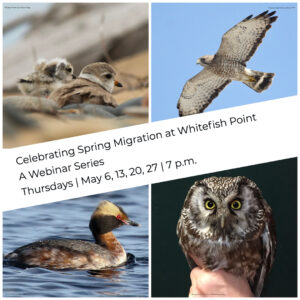
Celebrating Spring Migration at Whitefish Point — A Webinar Series
Demystifying Great Lakes Waterbirds
May 20 | 7 p.m.
Having trouble distinguishing what dabbling duck you are observing? Or maybe you aren’t sure how to tell the difference between a Long-tailed Duck and a Red-necked Grebe from afar. Join us for Waterbird Counter Matthew Winkler’s presentation breaking down his methods used to unravel waterbird identifications. For many of us, identifying ducks, loons, and grebes in flight comes with a high intimidation factor; these waterbirds travel quickly, and some are only subtly different. Matthew will help break down these barriers and help you better enjoy lakewatching and all of the exciting birding it offers! Matthew is excited to share his experience with you and answer questions regarding waterbird ID and the waterbird count at Whitefish Point Bird Observatory.
This event is the third in a four-part series of free webinars celebrating spring migration at the Point and highlighting WPBO research programs.

